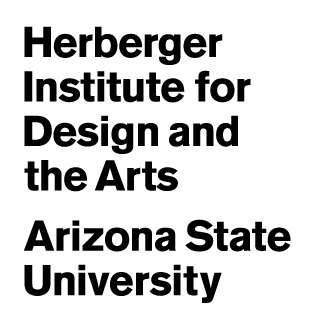The fashion program combines history, business practices and hands-on studio experience to prepare students for a variety of roles in this global industry.

Program description
The BA in fashion at ASU is a transdisciplinary program that provides students with a foundation that enables them to work across many segments in the fashion industry.
The fashion program combines history, business practices and hands-on studio experience to prepare students for a variety of roles in this global industry. Gaining a proficiency in illustration skills and fluency with materials, traditional techniques and digital technologies, students are prepared for interdisciplinary collaborations through coursework across marketing and merchandising, wearable technology, sustainability, management and leadership, international experience, and fashion and culture. In the capstone experience, students develop a substantial project within an area of focus. Opportunities for internships and study abroad further advance students' professional goals.
Through the leadership of well-known industry professionals, students with this bachelor's degree in fashion are connected globally to leaders in the industry.
A message from Dean Steven Tepper
Welcome to the Herberger Institute for Design and the Arts, the largest comprehensive design and arts school in the nation, located within a dynamic 21st-century research university.
With almost 8,000 students, more than 750 faculty members, more than 125 program options and a tradition of top-ranked programs, we are committed to redefining the 21st-century design and arts school. Our college is built on a combination of disciplines unlike any other program in the nation, comprising ASU Art Museum, ASU FIDM, The Design School, The Sidney Poitier New American Film School and the Schools of Art; Arts, Media and Engineering; and Music, Dance and Theatre.
The institute is dedicated to the following design principles:
Creativity is a core 21st-century competency. Our graduates develop the ability to be generative and enterprising, work collaboratively within and across artistic fields, and generate non-routine solutions to complex problems. With this broad exposure to creative thinking and problem-solving, our graduates are well prepared to lead in every arena of our economy, society and culture.
Design and the arts are critical resources for transforming our society. Designers and artists must be embedded in their communities and dedicate their creative energy and talent to building, reimagining and sustaining our world. Design and the arts must be socially relevant and never viewed as extras or as grace notes. The Herberger Institute is committed to placing designers, artists and arts-trained graduates at the center of public life.
The Herberger Institute is committed to enterprise and entrepreneurship. For most college graduates today, the future of work is unpredictable, non-linear and constantly evolving. A recent study found that 47 percent of current occupations will likely not exist in the next few decades. At the Herberger Institute, our faculty, students and graduates are inventing the jobs and the businesses of the future; reimagining how design, art and culture get made and distributed; and coming up with new platforms and technology for the exchange of culture and the enrichment of the human experience.
The legendary author and expert on city life Jane Jacobs talks about the abundance of "squelchers" — parents, educators, managers and leaders who tend to say no to new ideas. At the Herberger Institute, there are no squelchers. We embrace the cardinal rule of improvisation — always say: "Yes, and…"
Every person, regardless of social background, deserves an equal chance to help tell our nation's and our world's stories. Our creative expression defines who we are, what we aspire to and how we hope to live together. At the Herberger Institute, we are committed to projecting all voices — to providing an affordable education to every student who has the talent and the desire to boldly add their creative voice to the world's evolving story.
Effectiveness requires excellence. We know that our ability to solve problems, build enterprises and create compelling and socially relevant design and art requires high levels of mastery. By being the best in our chosen fields, we can stretch ourselves and our talents to make a difference in the world.
As part of a weekly installation on campus, a Herberger Institute student once hand-lettered "Here's to the dreamers and the doers" in chalk on an outdoor blackboard on the ASU campus. Whether you are an architect, designer, artist, performer, filmmaker, media engineer or creative scholar, the Herberger Institute is a place to dream.
But unlike the misrepresentation of the artist and scholar as lost in a cloud, our faculty and students "make stuff happen" and leave their well-chiseled mark on the world. Come tour our concert and performance halls, design and art studios, exhibition spaces, dance studios, scene shops, classrooms, clinics and digital culture labs, and you will see the power of dreamers and doers.
If you are reading this message, you are implicated as a potential collaborator. Bring us your talents, your ideas and your passion — we will dream and do great things together.
Enthusiastically yours,
Steven J. Tepper
Dean and Director, Herberger Institute for Design and the Arts
Foundation Professor
Arizona State University
© 2025 coursetakers.com All Rights Reserved. Terms and Conditions of use | Privacy Policy